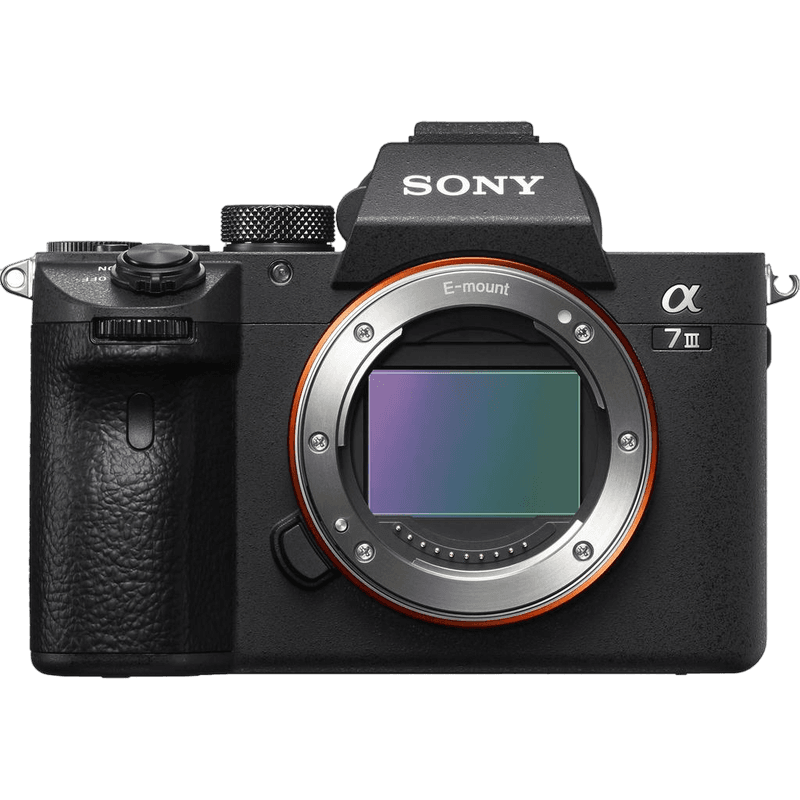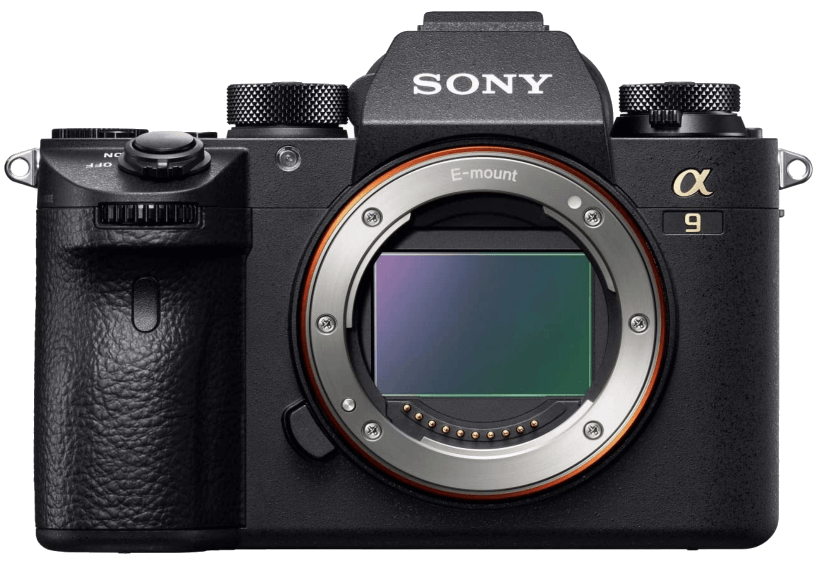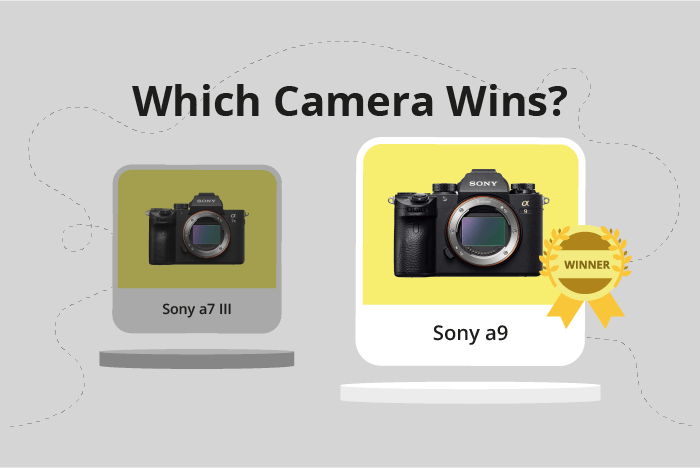Sony a7 III vs a9 Comparison
Sony a7 III

Sony a9

The Sony a7 III and Sony a9 both scored highly in our evaluation, making them excellent mirrorless cameras. Both cameras were announced in 2017-2018 and share similar dimensions, with the a7 III measuring 127 x 96 x 74mm and the a9 at 127 x 96 x 63mm. They also have comparable weights, with the a7 III weighing 650g and the a9 at 673g. The a9 boasts a slightly slimmer design, which could be an advantage for some users.
Taking these factors into account, both cameras offer excellent performance, but the a7 III may be the better choice for those on a budget. Meanwhile, the a9’s slimmer design might appeal to those who prioritize portability.
Sony a7 III vs a9 Overview and Optics
The Sony a7 III and the Sony a9 have identical scores for optics, both receiving an 81/100. This similarity is reflected in their shared specifications. Both cameras have 24.2 megapixels, CMOS sensor types, Bionz X processors, full-frame sensor sizes, Sony FE lens mounts, and image stabilization. Despite these commonalities, there are differences that set them apart.
The Sony a9 has a faster shooting speed of 20 frames per second, compared to the a7 III’s 10 frames per second. This advantage allows the a9 to capture fast-moving subjects more effectively. Additionally, the a9’s sensor has a lower DXOMARK score of 92, compared to the a7 III’s score of 96. The lower DXOMARK score indicates that the a9’s sensor is not as efficient at capturing image details as the a7 III’s sensor.
Conversely, the Sony a7 III has a higher DXOMARK score for its sensor, which means it can capture better image quality and details than the a9. However, its slower shooting speed of 10 frames per second may not be suitable for capturing fast-moving subjects.
Considering these differences, the Sony a9 is better suited for photographers who prioritize capturing fast-moving subjects, while the Sony a7 III is more appropriate for photographers who value image quality and detail. Despite their identical optics scores, these cameras cater to different needs and preferences.
Sony a7 III vs a9 Video Performance
The Sony a7 III and the Sony a9 are similar in terms of video capabilities, but the a7 III takes the lead. They share several video specifications, making them equally competitive in this aspect.
Both cameras offer a maximum video resolution of 4K, with dimensions of 3840 x 2160, ensuring high-quality video output. Additionally, they both have a maximum video frame rate of 30fps, which is sufficient for capturing smooth motion in video recordings. Only the a7 III has built-in time-lapse functionality.
Sony a7 III vs a9 Features and Benefits
The Sony a9 slightly outperforms the Sony a7 III in features, scoring 83/100 compared to the a7 III’s 81/100. Both cameras share several specifications, including a 3-inch screen size, touchscreen capabilities, flip screen, GPS absence, and WIFI and Bluetooth connectivity.
The Sony a9 surpasses the a7 III in screen resolution, boasting 1,440,000 dots compared to the a7 III’s 921,600 dots. This higher resolution provides a clearer and more detailed image preview and playback experience for photographers.
On the other hand, the Sony a7 III does not have any features that make it superior to the Sony a9. However, it is worth mentioning that the a7 III comes close to the a9’s performance, with only a 2-point difference in feature score. This similarity indicates that the a7 III is still a competitive camera, offering most of the essential features that the a9 provides.
Considering these points, the Sony a9 is the better camera in terms of features. Its higher screen resolution offers an improved image preview experience, making it the more appealing option for photographers who prioritize this aspect. However, the Sony a7 III is not far behind, and its near-identical performance should not be overlooked. Ultimately, the choice between these two cameras will depend on individual preferences and priorities, with the a9 being the top choice for those who value screen resolution above all.
Sony a7 III vs a9 Storage and Battery
The Sony a7 III outperforms the Sony a9 in storage and battery with a score of 81 compared to 65. Both cameras have two memory card slots and accept SD/SDHC/SDXC cards. However, the a7 III also supports Memory Stick Duo/Pro Duo/Pro-HG Duo cards, while the a9 is only UHS-II compatible.
The a7 III’s battery life is superior at 750 shots, 100 more than the a9’s 650 shots. Both cameras use the NP-FZ100 battery type and do not have USB charging. The longer battery life of the a7 III offers an advantage for extended shooting sessions.
The a9 does not provide any notable advantages in storage and battery when compared to the a7 III. Therefore, the a7 III is the better choice for those prioritizing storage and battery performance.
Alternatives to the Sony a7 III and a9
Are you still undecided about which camera is right for you? Have a look at these popular comparisons that feature the Sony a7 III or the Sony a9:

